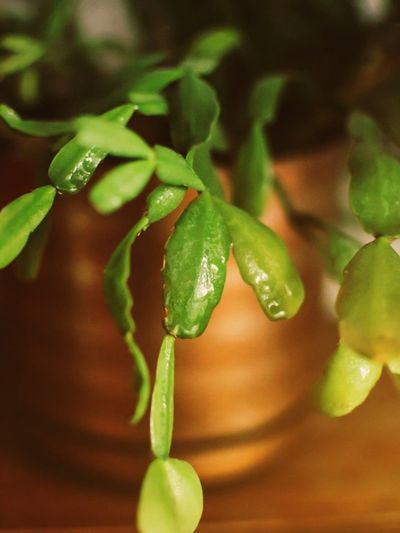Christmas Cactus Fungal Issues
Rots, including basal stem rot and root rot, are the most common problems affecting Christmas cactus.
Stem rot- Basal stem rot, which generally develops in cool, damp soil, is easily recognized by the formation of a brown, water-soaked spot at the base of the stem. The lesions eventually travel up the stem of the plant. Unfortunately, basal stem rot is usually deadly because treatment involves cutting the diseased area from the base of the plant, which removes the supportive structure. The best recourse is to start a new plant with a healthy leaf. Root rot- Similarly, plants with root rot are difficult to save. The disease, which causes the plants to wilt and eventually die, is identified by a wilted appearance and soggy, black or reddish brown roots. You may be able to save the plant if you catch the disease early. Remove the cactus from its pot. Rinse the roots to remove the fungus and trim rotten areas. Repot the plant in a pot filled with a potting mix formulated for cacti and succulents. Be sure the pot has a drainage hole.
Fungicides are often ineffective because specific pathogens are difficult to identify, and each pathogen requires a different fungicide. To prevent rot, water the plant thoroughly, but only when the potting soil feels slightly dry. Let the pot drain and don’t allow the plant to stand in water. Water sparingly during the winter, but never let the potting mix become bone dry.
Other Diseases of Christmas Cactus
Christmas cactus diseases also include botrytis blight and impatiens necrotic spot virus.
Botrytis blight– Suspect botrytis blight, also known as grey mold, if the blooms or stem are covered with silvery gray fungus. If you catch the disease early, removal of infected plant parts may save the plant. Improve ventilation and reduce humidity to prevent future outbreaks. Necrotic spot virus– Plants with impatiens necrotic spot virus (INSV) display spotted, yellow or wilted leaves and stems. Use appropriate insect control, as the disease is usually transmitted by thrips. You may be able to save diseased plants by moving them into a clean container filled with fresh, pathogen-free potting mix.
